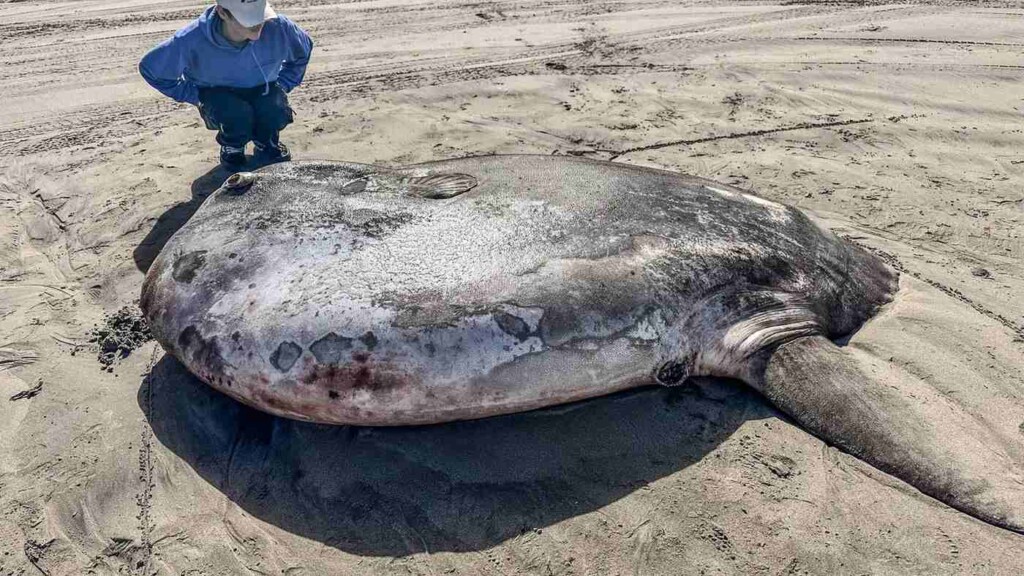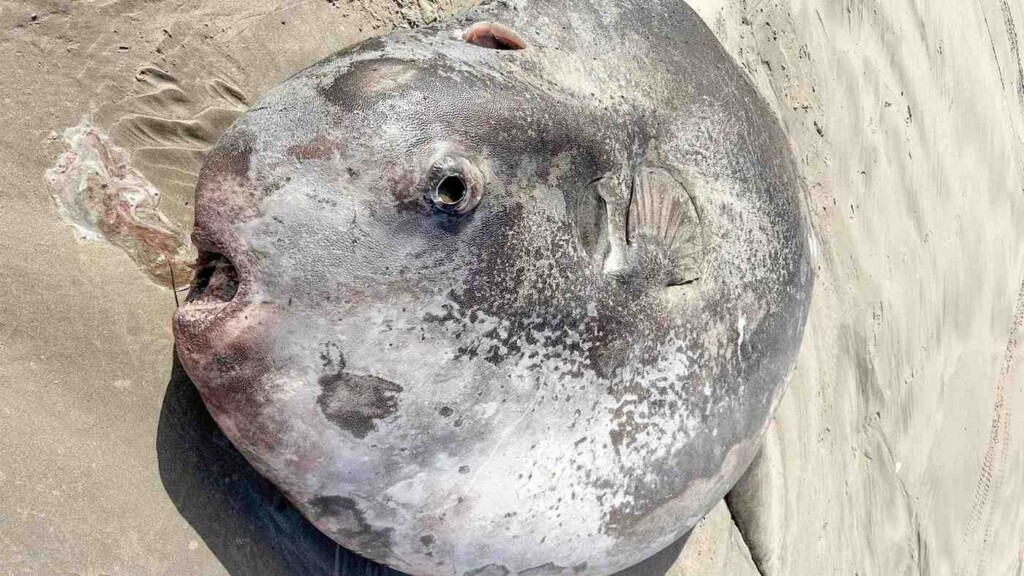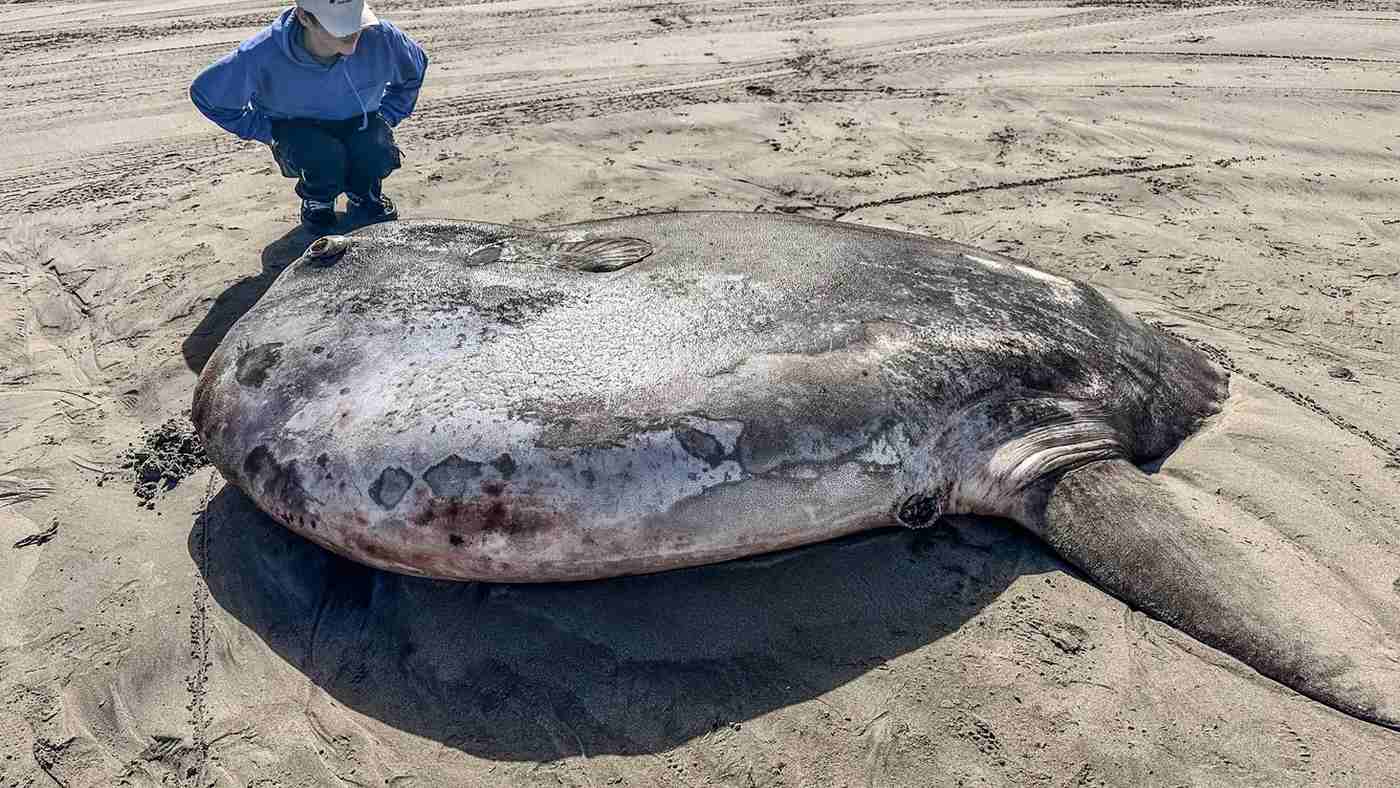
When a giant ocean oddity washed up on a beach in northern Oregon, residents were flocking to get a closer look at a rarely-seen fish.
Believing it to be the charismatic Mola mola, or ocean sunfish, pictures eventually made their way across the Pacific to the desk of marine biologist Marianne Nyegaard, who recognized that it was, in fact, a different species—one that’s even more mysterious.
Recognized as distinct from M. mola, the hoodwinker sunfish, or Mola tecta, was only identified in 2017. Since then only a few confirmed sightings of the fish have been made, and Nyegaard would know—she’s the one who first described and named it.
According to Britannica, the hoodwinker sunfish can grow up to 7.9 feet long and is smaller than the other members of the sunfish family, which can exceed 10 feet. The fish have distinctive features, including a bullet-like shape, tough skin, and a small mouth with beaklike teeth.
“Originally thought to only occupy the temperate waters of the southern hemisphere, that theory would be challenged as a few have recently washed ashore in California and one as far north as Alaska,” read a statement from the Seaside Aquarium in Oregon.
MORE SECRET SPECIES FROM THE DEPTHS: Rare Deep Sea Squid with ‘Headlights’ Captured on Video–Mistaking the Camera for Food–WATCH
“This fish, hiding in plain sight, has most likely been seen/washed ashore in the Pacific Northwest before but was mistaken for the more common, Mola mola. Marianne Nyegaard reached out to the Seaside Aquarium to see if they would be willing to take samples for genetics. Staff quickly responded, took more photographs, measurements, and tissue samples.”

“Through photographs, Marianne confirmed that it was a hoodwinker and that this may be the largest specimen ever sampled. This fish is still on Gearhart Beach and will probably remain for a few more days, maybe weeks as their tough skin makes it hard for scavengers to puncture. It is a remarkable fish and the aquarium encourages people to go see it for themselves,” the aquarium concluded.
SHARE This Incredible Opportunity With Any Coastal Oregonians You Know…





















can we please do more for the good beings who would have seen the fish wash up and with a kind heart brought him healthily back to sea, thanks
It likely washed up after it died, but we love stories of beachgoers trying to help beached animals who are still breathing.
The question is why and how did it die!? Give it some respect, bring it back to the ocean.